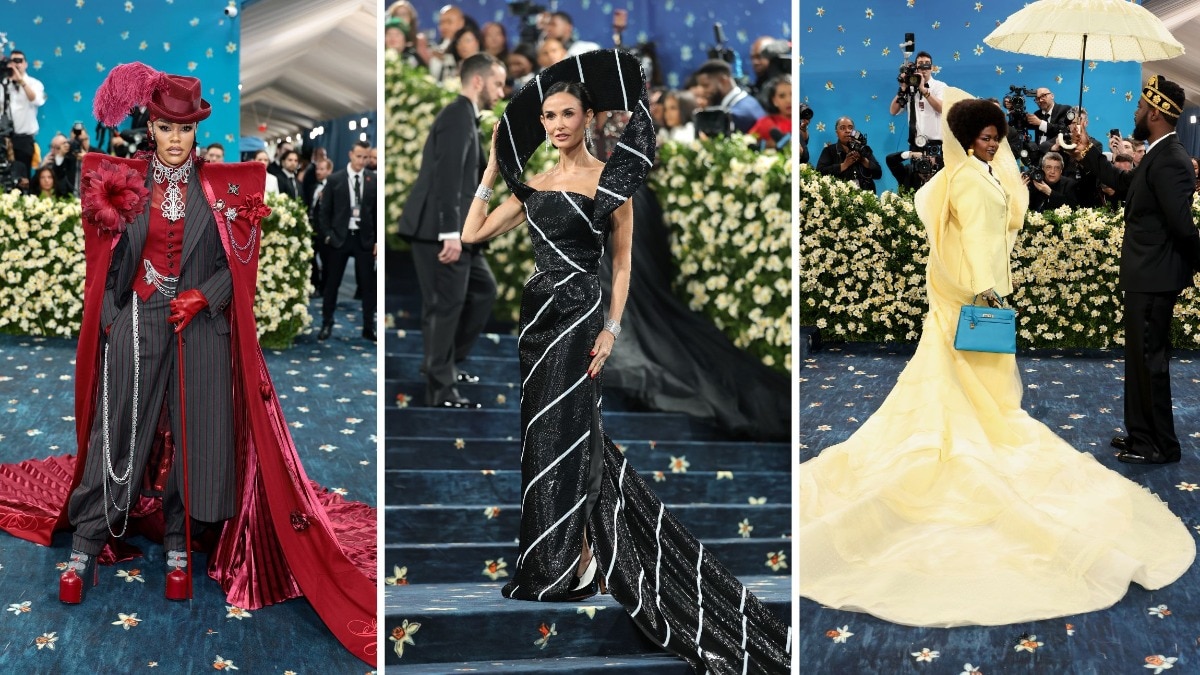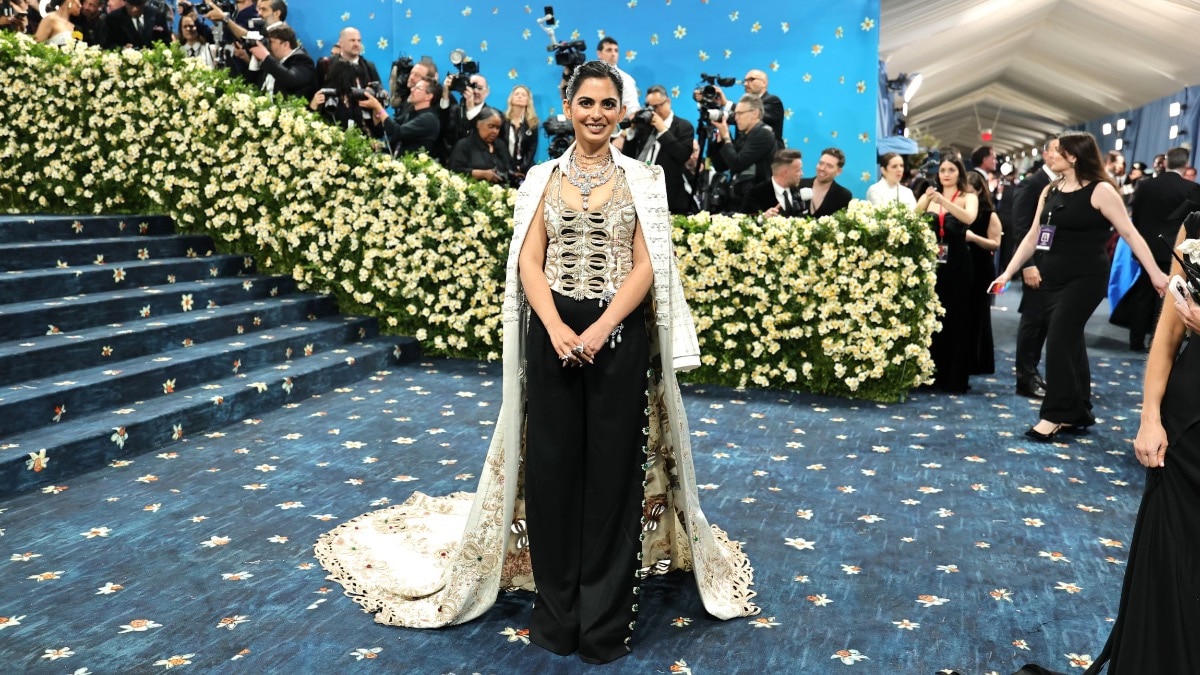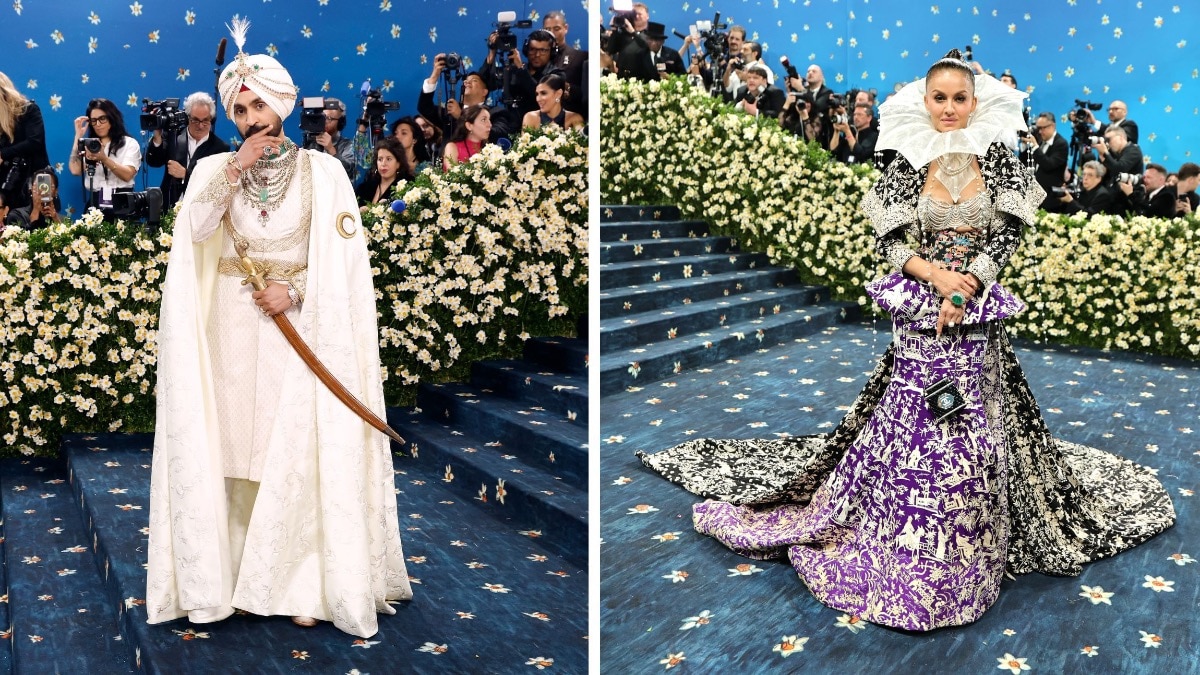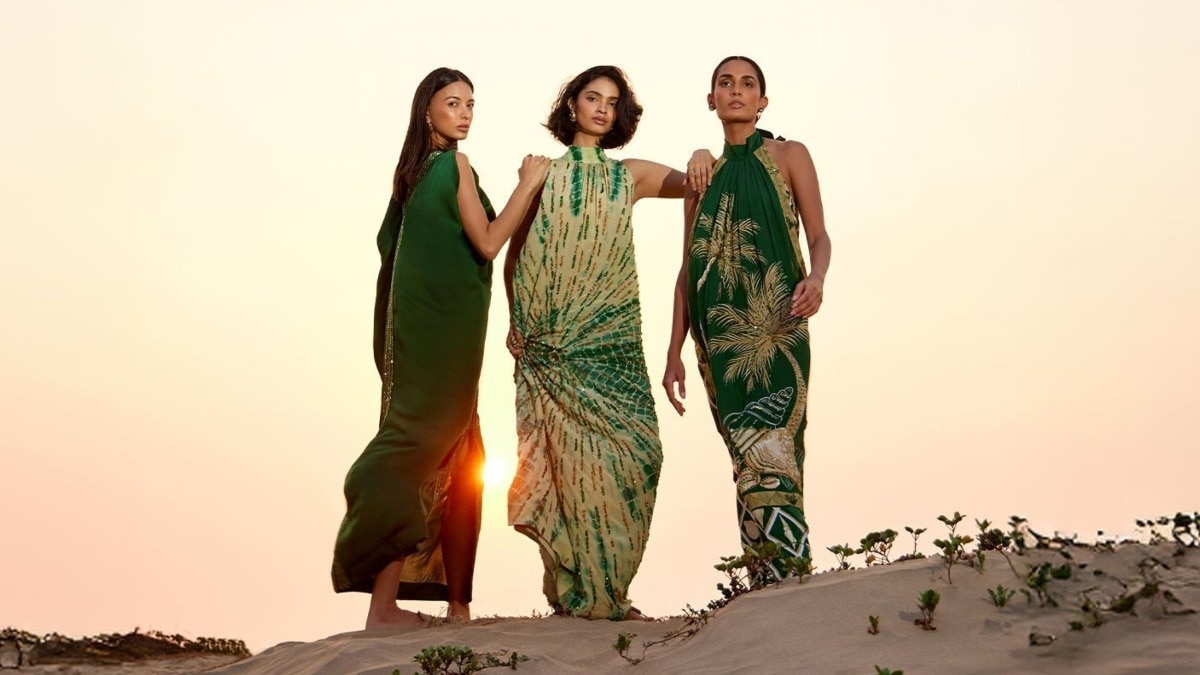8 new-age designers who are reinventing the art of block printing
They are adding chic to the traditional, one piece at a time.


Hard to conceive that some genius—by a mix of creative, nonconformist thinking and serendipity—chanced upon a wooden block, decided to carve a design, embellished it with natural pigments, and transferred it onto fabric, for no other reason than the sheer joy of beauty. Then, of course, it took many people, many decades and many interventions for block printing to be the refined art form and huge commerce that it is today. Even so, artisans, day in and day out, in a meditative trance, play with symmetry to bring designers’ visions to life on a printing table; in pretty much the same way our ancestors did.

Fragments of many printed textiles (estimated to be between 11-14th century), and one that particularly looked like Ajrakh, were discovered at excavations sites in Al Fustat, Egypt. While weaving does find a mention in The Vedas, this early archaeologic dig finding is proof that humans have been playing with dyeing, printing, and beautifying woven fabric for a millennia. Block printing is a deceptively simple printing technique, developed first to fasten the hand painting process. For this process, both the blocks’ maker and printer are equally important. It requires designs to be translated on wooden or metal blocks, which are then used to transfer complex patterns onto fabric or paper in a symmetrical or abstract manner. There are up to 30 steps in some indulgent styles, and the area’s climate, water, and mud, all affect the final results. Broadly, the most popular schools of practice are; Jaipur by way of Sanganer and Bagru, Machilipatnam Kalamkari from Hyderabad (different from traditional Kalamkari that is pure hand painting), Bagh in Madhya Pradesh and Ajrakhpur in Kutch. Many traditional artisan families still maintain at least some semblance of old traditions and archives, but many of their children, and some creative adults, have broken out and chosen to transcribe traditions in new ways—for money or for a curious mind. This report tracks and celebrates those who have chosen to colour, or in this case, print, outside the lines.
In the seminal art and culture Marg magazine (Vol 73, issue no 4), Dastakar’s Laila Tyabji writes, “Tradition must be a springboard, not a cage.” India is in a unique position of being the country with living textile traditions. It also has the largest youth population in the world, who are determined to create new identities. Where old exists freely with the new, and where location doesn’t have to determine or coop their art. Purists are disenchanted with this ‘anything goes’ approach, citing sanctity. However: what was once new is now old, what is now will once be traditional...and so it goes.
CHIP OF THE OLD BLOCK
In the photos ahead, meet the work of Shambhavi Tiwari, who is giving a new spin to the most famous style of block printing out of India-Chintz. Chintz came from the Indian word ‘cheent’ or ‘chinta’, as in spotted or sprinkled. It was casually used to refer to any printed cotton fabric from the Coromandel coast. Initially used for upholstery, the demand for this exquisite textile made in ‘English colours’ was so immense that France and other European countries had to ban its import, lest their local business suffered. Shambhavi’s Studio ST in Jaipur patterns chintz for brands such as Nalli, Mishru, Mrunalini Rao, among many others. “Working with or trying to offer a twist to traditional design requires a purity of intent. Experiments succeed from mastering the basics first,” Shambhavi believes. Young brand Jodi is notable; it has built its entire brand DNA to reflect the block printing repertoire of our country in fun, sexy silhouettes—without compromising on the steps required to block print.
We have a brigade of ‘expats’ who came to India, fell in love with our people and crafts, and did a lot to give back. French Brigitte Singh changed the face of block printing in India with her minimal Mughal Poppies. She opened some of her oldest—and last remaining—pieces of this original design (that is also a part of the V&A museum’s permanent collection). Anokhi started in 1970s by Faith (from the UK) and John Singh is an institution. They single-handedly created an elevated visual language for block-printed everyday goods for a local as well as an international market, while offering respectful employment to Indian artisans for decades. The Anokhi museum charts the history of block printing in India, specifically Rajasthan. The layered halterneck dress by them in the shoot is 30-years-old! That is what good design does...it transcends seasons and years.
From NY to New Delhi: Peter D’Ascoli (ex Diane von Furstenberg Studio Director) has been based in India since two decades. His studio’s elegant and coquettish take on Indian block prints via his brand D’ASCOLI is noteworthy. Finally, Kutch exists as a dreamland, on the precipice of the past and future, a repository of partition goods and stories. Ajrakh, the famed and revered geometric design textile from Sindh, and now Ajrakhpur, has enjoyed a renewed popularity in recent years. For its makers, this work is deeper than employment. We shot new iterations of Ajrakh-inspired fashion in the same enviornment they are made.
AJRAKHPUR

“It is our responsibility to keep traditions alive, and share that legacy with future generations by reinventing a balance between the old and the new. We do not ‘commission’ work, rather we collaborate with artisans to create products of a certain quality and aesthetic—which can take the craft to a global landscape,” says Anita Lal, Founder of Good Earth. This craft-focused brand has consistently made sure the country’s crafts and weaves are at the front and centre of the organisation’s collections, and not trends.
KHALID AMIN KHATRI

“Do you know where is Khalid Amin’s workshop?” A question that is met with a lot of nervous smiles and chuckles as we try to find his printing centre. Every town needs an eccentric artist, and he is Ajrakhpur’s most prominent one. Amin, 29, is ambitious, totally left-of-centre, and very, very talented. Amin’s work stays within Ajrakh’s traditional borders, quite literally, but don’t try to reign his wild streak.Made in a mix of hand painting and block prints—Amin’s piece depicts the elements of earth—land, fire, wind, water, and humans as seen from space.
SUFIYAN AND JUNAID KHATRI

Sons of multi-award winning Dr Ismail Khatri, (the man responsible for resettling many artisans from the Khatri community in Ajrakhpur, after the devastating earthquake in Dhamadka) Sufiyan and Junaid Khatri are a dynamic duo. They travel the world to teach and talk about their practice. In their individual capacity, they have collaborated with brands such as Péro, Vraj: bhoomi, and Abraham and Thakore, among several international ones. Their modern iterations within the Ajrak tradition is visible in first glance itself, however, there is deep cognisance and reverence for the work that was passed onto them by their ancestors. Junaid refers to Ajrakh as barkat wala kaam—as in, work of prosperity, work that uplifts anyone who takes it on.
“In our practice, we do not paint or block print animals. It is forbidden. Once after accepting commissioned work, we realised the design had a deer. After seeking counsel from our elders, we were advised to go ahead with it, as long as we created a block for the deer without depicting its eyes, to be respectful towards our culture.” Sufiyan Khatri opens up to share that traditional communities are open to change, as long as the work is gracious. For many in Ajrakhpur, block printing work is not only their means to earn a livelihood, but their ancestors’ sacred mission—and they hope it will be recognised as such.
MOHAMMED BILAL KHATRI: BAGH, FROM MADHYA PRADESH

Above, witness a striking, authentic sheet, featuring Bilal’s family’s most prestigious blocks. Bilal comes from an industrious family that has won State and President awards. His grandfather, Ismail Suleman Khatri, is considered the forefather of Bagh printing. Understanding the responsibility of belonging to a landmark family, he is candid, “If we, the youth, didn’t commit ourselves to this work, it would be wiped out.”
When he started working with his family, it was to preserve the family’s legacy, but in the repetition of the prints, he fell in love with the craft. Originating in Madhya Pradesh, Bagh printing requires a laborious prep process, involving multiple rounds of washing with raw salt, oil, and goat dung. Some of the steps in Bagh printing are similar to Bagru, but the results are strikingly different, owing to the climatic conditions.
CREATIVE BEE, HYDERABAD: MACHILIPATNAM KALAMKARI

Kalamkari refers to ‘kalam’—as in pen, and ‘kari’, as in workmanship. Internationally referred to as chintz, the origins of this art form were hand painting, but the demand and fervour, especially from foreign shores, forced artisans to depend on blocks for faster production. Today, it is considered a form of block printing art in itself. Bina and Keshav Rao’s Creative Bee in Hyderabad is a design studio and research centre. Investing in seeds, yarns, processes, and most importantly, natural dyes, means they are able to keep their practice as close to the original tradition as possible, while creating pieces in the style of today.
KHUSHIRAM PANDEY: SANGANER

2023 is a big year for this young Sanganeri artisan/businessman. He is one among five Indian artisan’s chosen by the Danish government to host a workshop in Denmark on Sanganeri block printing. Fifth generation artisan, Khushiram Pandey, along with his father, a master block printer, founded their eponymous label Awdhesh Kumar—selling mens’ shirts and home linen. He didn’t want to just be a backend solutions manager to other brands. “Sanganeri printing is the finest of all block prints. It gets the most amount of orders, and needs really skilled artisans who work at Godspeed.”
According to Pandey, modernisation doesn’t always have to mean new colours or shapes. Readjusting the lens with which artisans are viewed is of utmost importance to him. To that end, he studies garment construction and business development, and spends a significant amount of resources on proper waste disposal.
THE ARCHIVES: BRIGITTE SINGH

Singh, 67, came to India in the ’80s to study miniature painting in Rajasthan, from France. Soon after meeting a Rajasthan royal and falling in love, she got married and never left. Block-printing in India was mostly practiced as an overall ‘jaal’ pattern, before Brigitte introduced her refined, nuanced sensibility. That minimal red poppy design, copied ad nauseam by various block printers, is Brigitte’s signature. Something she developed after her father-in-law gifted her a vintage textile inspired by Shah Jahan and his love of delicately detailed Mughal flowers. Her blocks have metal tips (to give the designs sharper precision than other block printers), she uses stronger pigments, meaning she also invests heavily in a canna lily water filtration system, so her dyes won’t pollute the nearby water bodies. Sustaining culture is sustaining the environment it belongs to, and Brigitte is committed to preserving both.
DHEERAJ CHHIPA: BAGRU

“Our textile traditions are historically rich, but currently languishing. It is now up to us, the new generation, to be inclusive, and find novel ways of accessing, redefining, and showcasing this treasure trove of knowledge and references.” Dheeraj lives and works with his father who has been practicing traditional mud resist, dabu printing in Bagru, for over four decades. His own experiments have led him to collaborate with brands such as Good Earth and Nila Jaipur, with whom he works on 100 percent organic indigo dyeing and printing.
Hair and makeup: Anuradha Raman; Hair and Makeup Assistant: Madhura Deokute; StylingAssistant: Zoiya Pereira; Models: Deepti Pawar and Vanessa Noronha (INEGA TALENTS); Production: Indie Production, Jaipur
Photographs by Prachi Sharma, Styling, Creative Direction, and Words by Vinita Makhija










